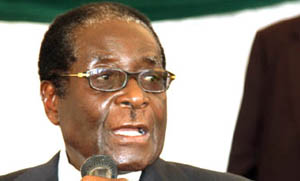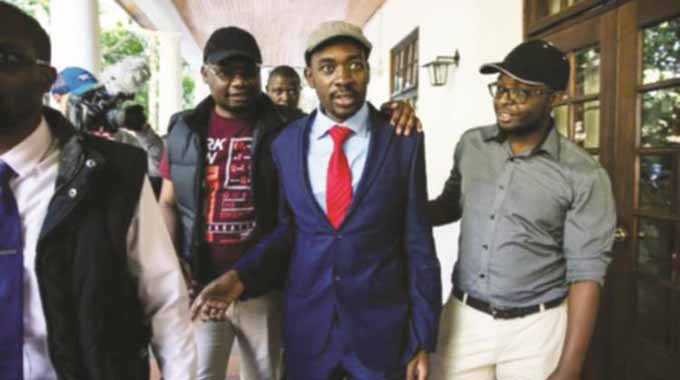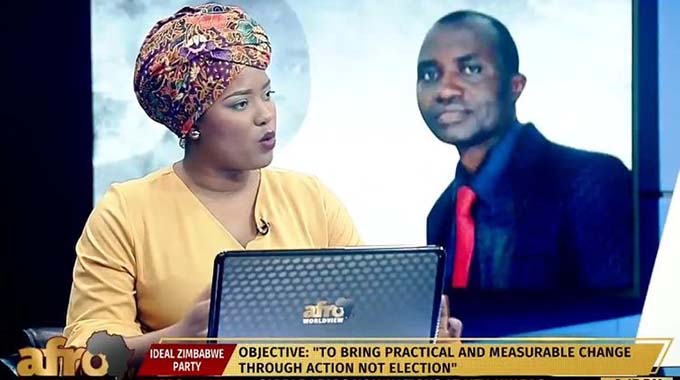State House not an illusion
taken from one of his many great hits, “Kure kachana” (Far and distant). From this masterpiece was derived the popular term, “kuState House kure” (the journey to State House is long and arduous).
But let me first turn to superstar Oliver “Tuku” Mtukudzi, whose decision to be part of Zimbabwe’s 32nd independence anniversary performance has attracted a lot of interest. Mukoma Tuku, some are asking, “How far?” (pun not intended). Others are wondering whether this is a “dzoka uyamwe” experience for an artiste who will be celebrating his sixtieth birthday some time this year.
Why the interest? Simple! People, your fans included have wondered why a talented artiste of your stature, whose talent was nurtured by Zimbabweans, before the outside world “discovered” him could suddenly disappear from the radar and not participate at national events as did others musicians.
But, we still welcome that about turn. It’s a double for you since you have seen both sides of the coin. You will share the stage with born-frees, mostly. Life is a journey, which you travelled with the people of this country. Sometimes we are forced to stop and look back, reflections that give us a true picture.
Zimbabweans grieved for their two sons, you Mukoma Tuku and Chimurenga music guru Thomas “Gandanga Tafirenyika” Mapfumo for what they saw as an abandonment of the revolution they helped shape with their music. They went missing in action when it was time to consolidate the gains of the independence they helped fight for.
As role models, those who followed in your footsteps thought that this was what one should do — abandon the struggle midway, and seek comfort elsewhere. We also welcome the return of the superstar who penned such great revolutionary songs with the lyrics:
Mhandu yakange yatambarara
Ikaisa muswe nokokoko
Ndokukanganwa kwayakabva
Ikafumura zvinoera
(Mu)nyika yedu yeZimbabwe
As you perform tomorrow, you will realise that there are legacies to pass on. That stagecraft in particular that will earn Zimbabwe a good name, and put lots of money in those young artistes’ pockets.
It is self-evident that this instalment is dedicated to the arts and our artistes and the immense contribution they have made in the realisation of the Zimbabwean dream, before and after independence, shaping its true identity in the process.
If the history of the sinking of that gigantic ship, the Titanic 100 years ago is being remembered, and also relived through a 3D artwork, why should we not do the same with Zimbabwe, through our artistes?
I also do so with the realisation that our artistes are leaving us, and the saddest element is that despite their contributions to this nation, the majority have left nothing to write home about, except their music.
I also take this opportunity to mourn Walter Muparutsa, who like Chopper, Mapfumo and Tuku is a larger than life figure in the arts industry. You don’t have to make justifications that they fit in our arts hall of fame.
Having worked with Walter “Mambo Mutasa” Muparutsa, the late Ambassador Stan Chigwedere and Thompson Tsodzo in a 1981 theatre production (The Storm) that was to be Zimbabwe’s first independence gala, I had great admiration for Walter’s talent and commitment.
Years later, each time I bumped into him, I would never stop telling him that I wanted to go back on stage, and do just one performance that will close the curtain on my acting career.
And, thank you Zimbabwe, the media especially, for giving him that befitting send off, something you have been doing so well in the past two years.
I also noted with sadness that Walter died on the eve of our independence anniversary.
With Walter gone, and Tuku performing at the independence gala, I spent hours listening to the late Simon Chimbetu’s hit songs, “Kure kachana”, “One way” and “Hoko”. I sealed the rendition of the masterpiece that I created in my mind with Pastor Charles Charamba’s “Nyika Zimbabwe”. For, when all is said and done, we give the creator honour and glory for enabling us, under insurmountable conditions to stand up to fight and reclaim what rightfully belongs to us.
When Martin Luther King, Jr said his famous “I had a dream . . . ” speech, we now realise that he indeed had a dream, where he saw what many Americans could not see then. And today, that dream has been realised through Barack Obama.
Retracing the Zimbabwean dream through arts, I realised how the nation is sitting on the talent of its children, not doing much to tell the Zimbabwean narrative through those artworks. As a musical production played out in my mind, I saw how creative geniuses in our midst can use the music of artistes like Chimbetu to tell our story.
His music has a sense of purpose and accomplishment that can play out as a prototype of one of the most beautiful musicals. Take “Kure kachana” (distant and very far off land), “State House” ceases to just be the presidential palace as we know it, but it becomes symbolic of what people yearned for — a free and liberated Zimbabwe, a sovereign nation running its own affairs. It was also not an illusion, but a rallying point that unified people towards achieving their goal.
For those who embarked on the journey (to State House or a free Zimbabwe), our freedom fighters, it might have been an insurmountable task and elusive dream but they had the drive and motivation to realise the dream.
They approached progressive governments in the region and abroad for assistance, and they too were willing to see Zimbabweans realise their dream. So, they walked together towards Zimbabwe, until that long winding journey to “State House” was realised on April 18, 1980, and we had the first black Zimbabwean leader residing at State House.
Chimbetu sings in the past, present and future, his message remaining relevant as he tells Zimbabweans what it took to be where they are. You have to be a wordsmith to capture the past, present and future and condense them into a masterpiece like “Kure kachana”, which will remain relevant forever and ever.
For an artiste who had given us “One way (to Africa)”, which tells of the settler colonialists’ master plan of conquering and entrenching their interests on the continent, Chimbetu had to finish off his message with “Hoko”, where his voice blends in very well with that of the commentator:
The Third Chimurenga has already begun
And the “hoko” has already been pegged
The “hoko” with blood
Because of a lot blood that was spilt
No one is allowed to ever tamper with the “hoko”
Siya iripo, hoko yechirangano
Hoko yarova kare, hoko yechirangano
Hoko mucherechedzo
Hoko yarova kare, hoko mucherechedzo . . .
Not only is there a sense of accomplishment and finality in Chimbetu’s message, but he also says that the “hoko” (insignia) is borne out of a covenant, and there is no reversing it. It’s a done deal.
Just like “State House”, “hoko” is also symbolic. It is Zimbabwe, its people and resources. After realising political independence, now is the time to embark on economic empowerment, wealth creation and distribution — what the indigenisation and economic empowerment policies are seeking to do.
Art mirrors society, and our artistes are the visionaries who present issues in raw format. It is up to us to translate those utopian ideas into reality.
So, it was in this mood and feeling that I saw a fantastic musical coming out — comprising various dance forms from all over Zimbabwe. The more I listened, the more I saw these ballet dancers, high up there. Why ballet since it is not a Zimbabwean dance form?
Partly because of the style, energy and concentration it requires. It is also an expression of freedom, elegance and ability to balance things. In ballet you can reach for the skies like an eagle, seeking self actualisation and self-fulfilment.
Happy 32nd independence anniversary, Zimbabwe! Forward ever, backward never. “KuState House kurefu”, but we have accomplished the ideal mission against all odds, and who will dare take us back on that tortuous journey?









Comments